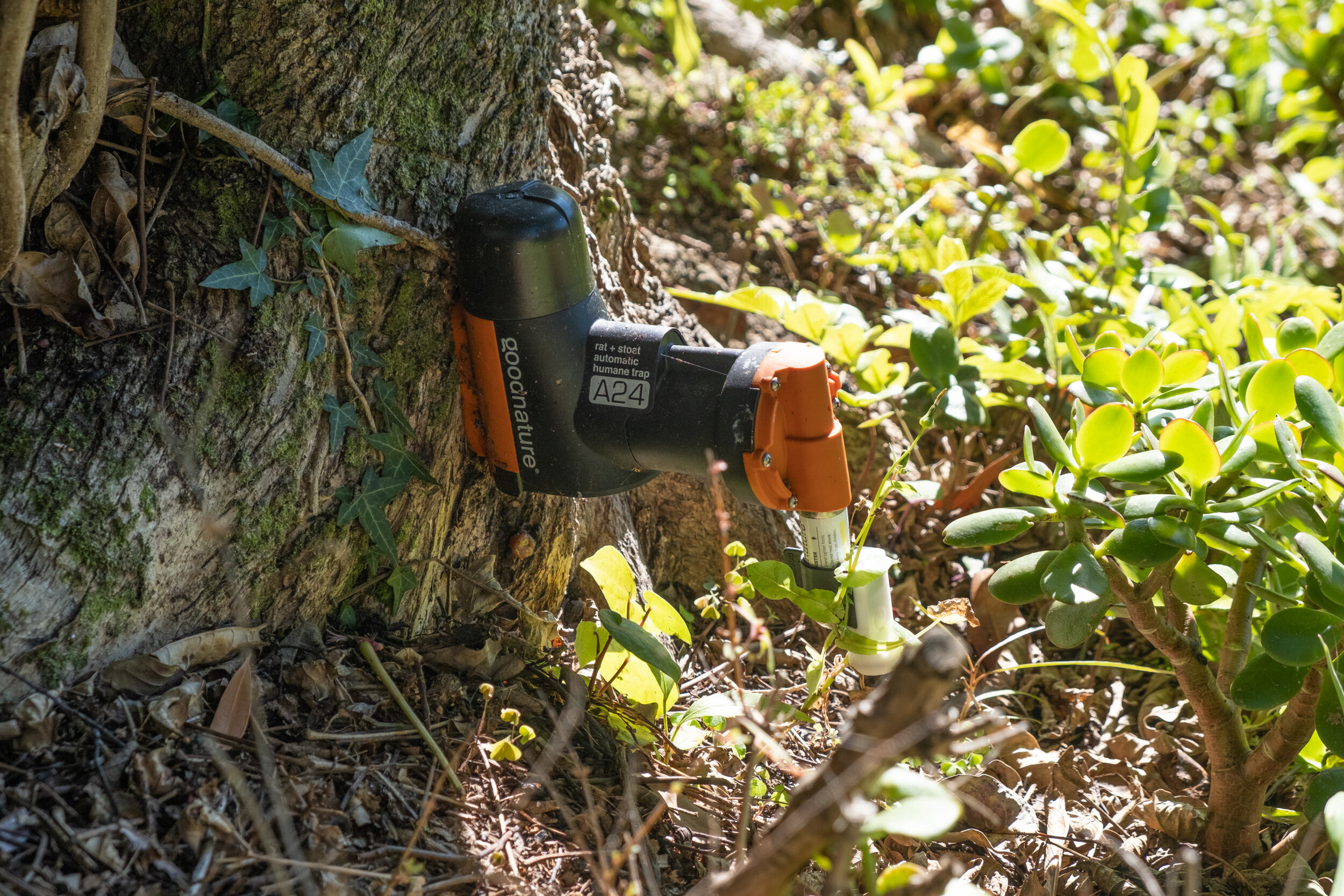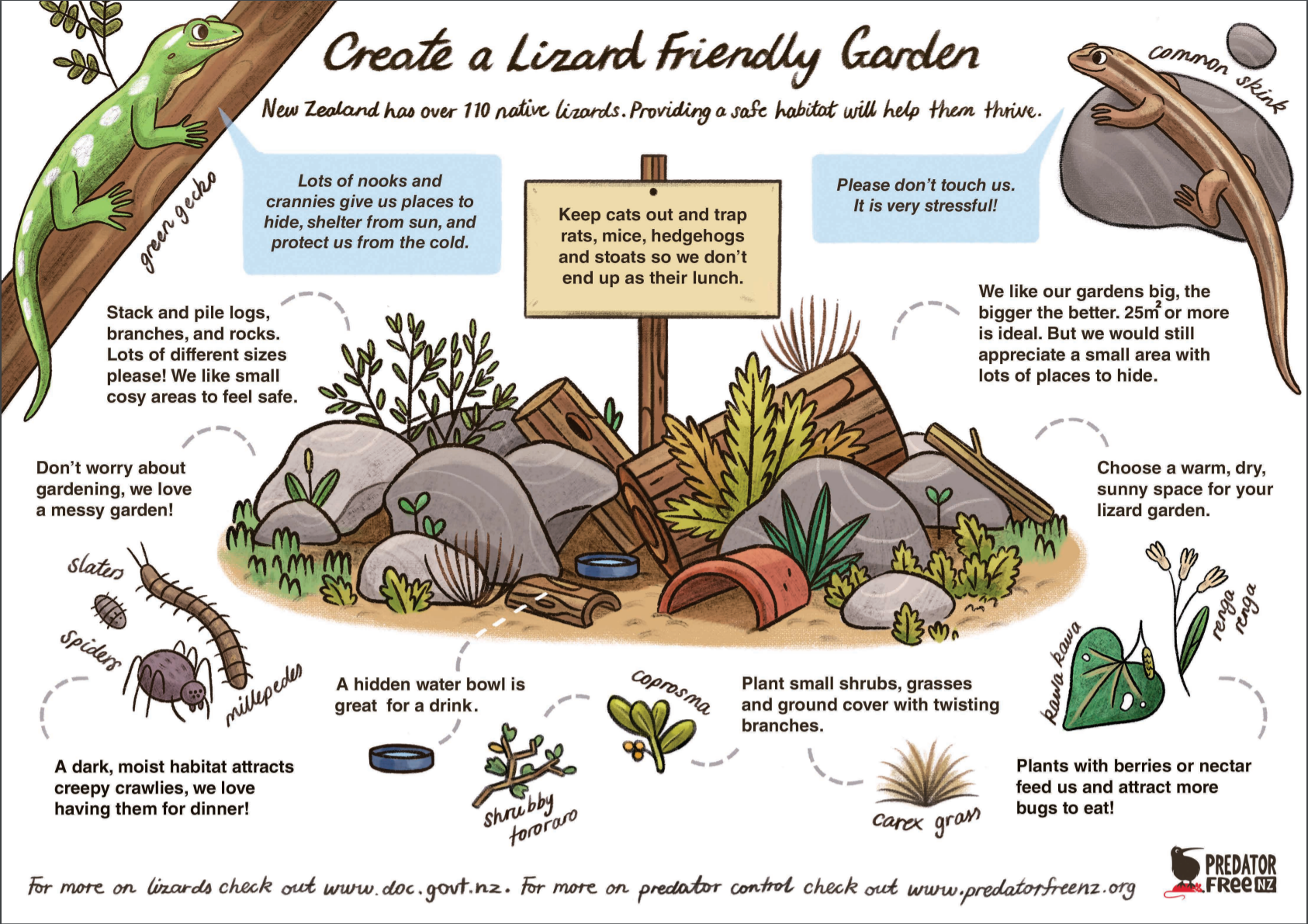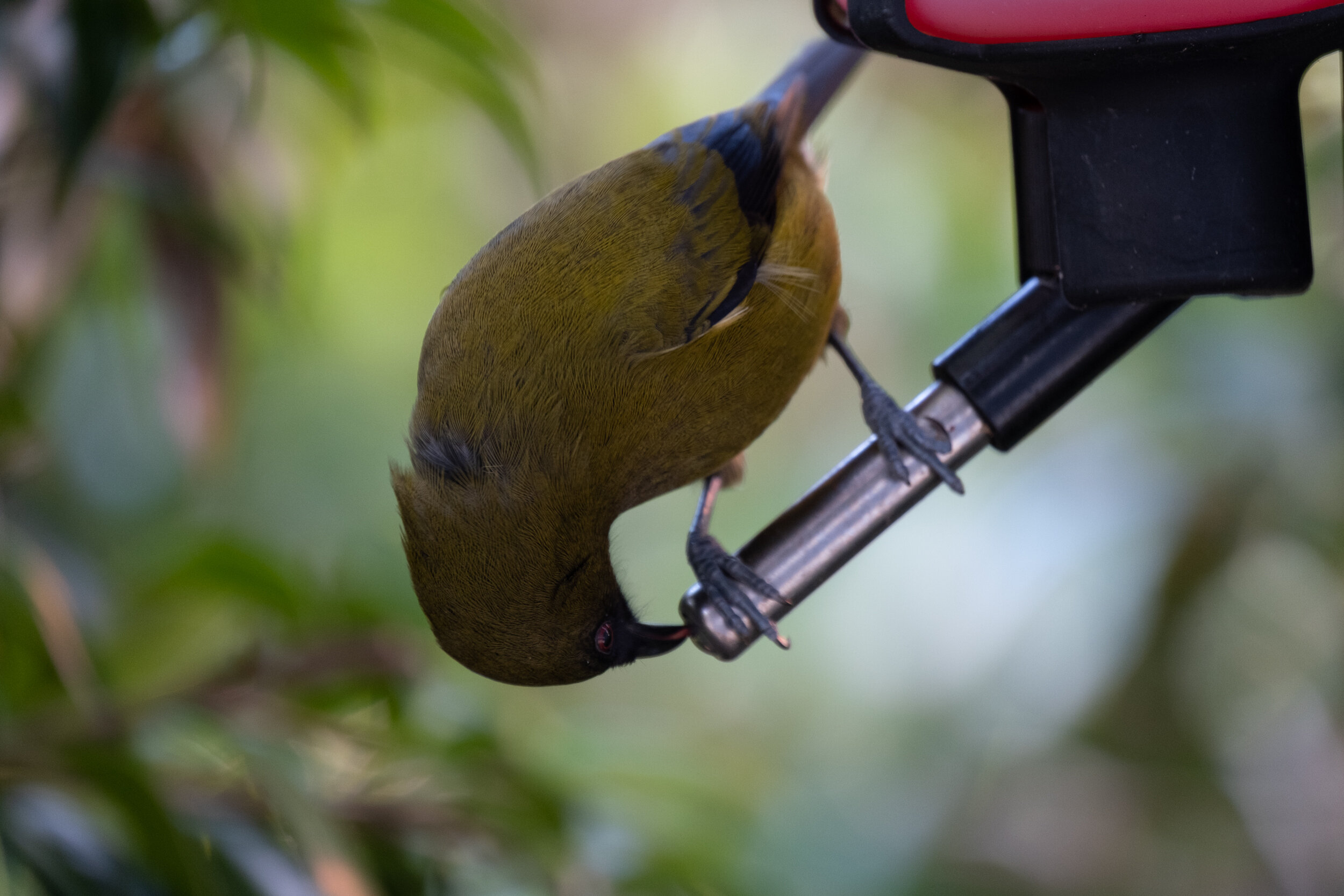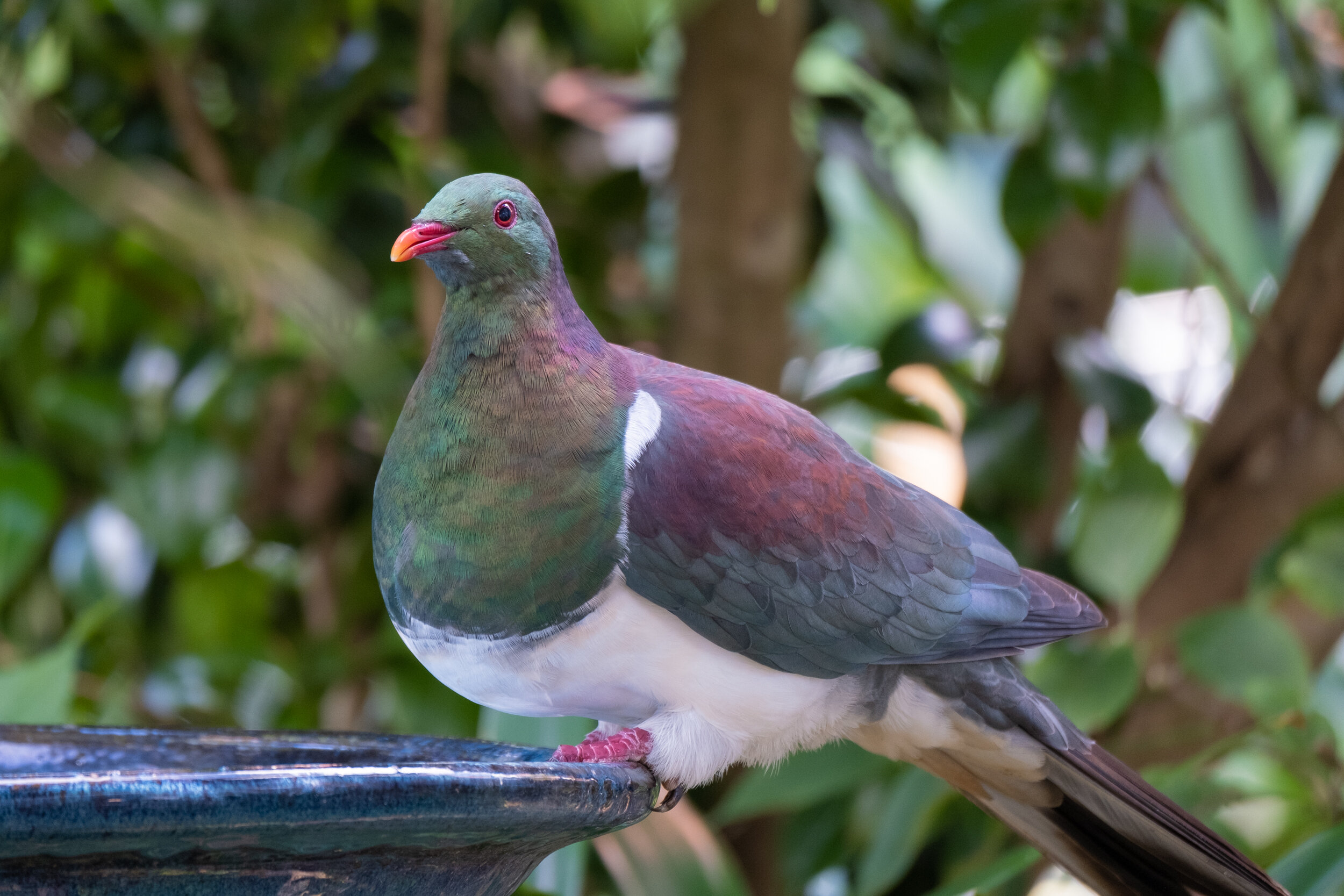In Aotearoa New Zealand, we are incredibly lucky to have amazing biodiversity. Our birds, reptiles, bats and invertebrates are awesome, and many can be found nowhere else on Earth. If you’re fortunate enough to have a garden, there are a bunch of things you can do to make your garden ideal for our native wildlife to hang out in and flourish.
I’ve split this blog into three sections:
Making your garden safe for our native wildlife
Feeding native birds responsibly
Planting natives
Tūī in my garden
Making your garden safe for our native wildlife
You wouldn’t invite your mates or family around to your place if there was an imminent threat to their lives, so the same goes for our wildlife! If you’ve got a garden, there is a high probability that you have introduced predators cruising around at night, looking for their next meal. Even if you reckon you don’t have any rats or mice visiting your garden, you probably do! They tend to be most active at night, so it’s not really a shocker that we don’t see them often.
Working out if you’ve got rodent activity (you probably do)
The easiest way to work out if you’ve got rodents paying your garden a cheeky visit is to use rodent detector cards. Goodnature has a three-pack of detector cards you can buy, or you can make your own. Detector cards have a small amount of lure on them, and you screw them into likely areas a rodent might hang out. Near your rubbish bins or compost are good places, and so is the perimeter of your property, as rodents tend to stick to the edges. Leave them there for a few days, and then inspect them. If they’ve been chewed, you’ve got rodents! I’ve previously cut up a cereal box to do a DIY job and smeared some peanut butter on small folded cutouts of cardboard (shiny side out) then nailed them around the garden.
Get yourself a trap
Once you’ve established the fact that you’ve got rodents hanging around your place, it’s time to get a trap. I know, the idea of killing animals isn’t a fun one, but we’ve got no choice if we want to save our native species. The sad reality is that mice, rats, hedgehogs, stoats, weasels, ferrets, possums and feral cats are introduced predators, and they’re decimating our native wildlife.
Backyard trapping is perhaps the most effective thing you can do to ensure your backyard is safe for our native wildlife to visit. You can get yourself a pet-and-child-safe (but not weka-proof) wooden tunnel trap from Predator Free NZ for $42 including delivery. Bait that bad boy up with some peanut butter, set it, and wait to see what happens. Keep the bait fresh, and check your trap often! Seriously, I can’t emphasise enough the importance of checking your trap often… I’m still scarred from one particular encounter with a month-old decomposing rat. The smell changes you as a person.
Trapping introduced predators isn’t something I take lightly, especially given that I’ve had a plant-based diet for several years now. I personally think it’s critical to ensure that you do everything you can to make sure you’re trapping pests humanely because we don’t want to cause any suffering. That’s why I highly recommend the Predator Free NZ tunnel traps and the Goodnature traps.
If the thought of dealing with dead things is too much to handle and is a barrier from beginning backyard trapping, there is a solution. A more expensive, but hands-free option is the Goodnature A24 automatically resetting trap. It can kill 24 pests before you need to replace the CO2 canister, and most kills are usually scavenged by other predators so you don’t need to deal with the remains.
My Goodnature A24 ready for action at the base of my pūriri tree. So far, mine has fired 5 times, meaning there are 5 less predators the native wildlife in my garden has to worry about
Keep your cat inside at night
Domestic cats are tiny lions, and they like to hunt our native wildlife (not just birds - our reptiles and invertebrates cop it from cats too). Keeping your cat inside, especially at night, is the responsible thing to do as a cat owner. Domestic cats go for seriously long wanders, straying far further from home than you’d suspect, and our birds can’t protect themselves against all those teeth and claws. Mittens might be adorably cute and cuddly at home, but I can guarantee that at night, Mittens becomes an apex predator. I heard an account recently of a cat owner who thought their pet had killed a neighbour’s budgie, only to realise it was in fact an endangered red-crowned kākāriki that had flown beyond the safety of Zealandia’s predator-proof fence. Not good.
Use window decals
Window decals are a highly effective way of helping birds navigate urban environments. They are ultraviolet stickers that you place on the outdoor side of your windows. These stickers serve an important function in letting birds know that they can’t fly in that direction, as the sticker tells them there is something solid in the way. I can personally attest to these stickers being effective, and I highly recommend them. It’s estimated that one billion birds globally are killed every year due to window strike. What a crappy way to go. Birds have awesome eyesight, but our windows reflecting the garden outside is confusing for birds and it makes them think they are safe to fly in that direction before colliding with a window at speed. Kererū are common victims of window strike, and given how hefty they are, they often break their collarbones or don’t survive the impact at all. Also, they can break your windows. A few stickers is a lot cheaper than a new window!
You can purchase a four-pack of window decals here. It’s recommended that you place one decal per 90 square cm of window space, so if you’ve got huge windows, you might need a few packs.
Get your window decals here
Install bird houses/nest boxes
Much of the predation of our native birds occurs at night when birds are roosting, or sitting on their nests. Installing a bird house or nest box, out of reach of introduced predators, can be an excellent way to encourage birds to your garden and to help population levels increase.
Placing your bird house in a good location takes some thought. Facing it away from prevailing winds is a good start. The most important factor in deciding where the bird house should go is ensuring it is out of reach of introduced predators (as much as possible). A good spot will be high up off the ground, away from close branches that rats or possums could climb along, and ideally with a good vantage point so the birds can see their immediate surroundings.
Great bird houses can be found at www.backyardbirds.co.nz and can be shipped to your door.
With so much of our native forest cut down, and a high rate of urbanisation, places to nest and even roost in bad weather are in short supply. There are many different kinds of bird houses available, but some are better suited to particular species that others, however some native species are unlikely to use nest boxes.
Riroriro (grey warblers) and tauhou (waxeyes) prefer cavity nest boxes, like the one below which is in my garden. Tūī have also been found using this style of next box too.
If you have a big section and have heard ruru (moreporks) calling at night, a cool project could be to construct a ruru nesting box. Wingspan Bird of Prey Trust have an awesome guide on how to make one yourself.
The cavity nesting box in my garden. Currently vacant, but hopefully will have a tenant in Spring!
Use a wētā hotel
Our amazing wētā are big fans of cosy, dry areas where they can chill out in. A wētā hotel is an awesome solution, and can be a great DIY project if you’re that way inclined. I picked my wētā hotel up from the Ngā Manu gift shop for $20 which was a bargain! So far, my only tenant is this native cockroach, but wētā and cockroaches coexist quite happily in these hotels so it’s not an issue. Once you’ve installed a wētā hotel, it can take up to three months before a wētā moves in (provided you have them in your garden).
The Department of Conservation has some good resources on how you can make your own wētā hotel, or you can find one online.
Reptile-friendly gardens
Aotearoa is home to many native reptiles, and there is a lot we can do to make our gardens a safe environment for them. In fact, we have over 110 of mokomoko (lizards)! The reason there’s not a definite number is because we keep discovering new species! How awesome is that?
Obviously, predator control goes a long way to making your garden safe, but there are a few other tricks up our sleeves. Creating a lizard-friendly garden is one of them. With the right native plants, like kawakawa, coprosma, renga renga and shrubby tororaro, and loads of nooks and crannies for lizards to hide, your garden can quickly become an ideal habitat for our beautiful reptiles.
Predator Free NZ’s guide to encouraging mokomoko (lizards) is a great resource
Feeding native birds
If you choose to feed native birds, know that with this decision comes a fair bit of responsibility and it’s a bit like having a pet. You must thoroughly clean your feeders regularly (ideally daily) to reduce the chance of it harbouring bacteria that can spread between bird species and make them sick.
I use the PekaPeka Bird Feeder. It’s awesome because it’s designed and made in NZ, is predator-resistant, and it can feed multiple species of native birds.
Sugar water
Tūī, kākā, korimako and tauhou all drink nectar, and will drink from a sugar water feeder once they’ve discovered it and gotten used to it.
The ideal ratio of sugar to water is 1:8. Half a cup of sugar in four cups of water is a good amount. Make sure you’ve completely dissolved the sugar. Change this sugary solution often to prevent it from fermenting and going yuck.
Manaaki Whenua has some great information on feeding birds that I encourage you to read too, as there are pros and cons you should be aware of.
Forest and Bird’s native bird diet table is a helpful guide in working out what to plant
Providing water
Very few things are cuter than birds bathing! Providing a water dish or bird bath is a great option to encourage more birds to your garden. A reliable water source is extremely valuable to birds, particularly in warmer months, and a bird bath is a simple solution. Your bird bath or water dish needs to be in a place that birds feel safe, so aim to put it somewhere they can perch nearby safely, and cats can’t hide in wait. Birds like to bathe at least once a day too, and they will only do this if they feel safe. Most birds need to drink water at least a couple of times a day too.
Keeping this water clean and fresh is important, as it can quickly become pretty gross if loads of birds are using it. To clean mine, I use an old dish brush to scrub any poop or grime off it, rinse it thoroughly with water and then refill it.
The depth of your bird bath can affect which birds will use it. If it’s deep, small birds like tiu (sparrows) or tauhou (waxeyes) won’t be able to bathe in it, but massive chonkers like the kererū to the right will have a great time. To make your bird bath more accessible, you can add a few large stones in it to create varying levels of depth to suit all birds. Just be prepared to clean those stones often too.
One thing to note is if you do have a kererū take a bath in yours, you’re probably going to need to refill it with water afterwards! Water goes blimmin’ everywhere when these dudes are having a splash.
Plant native trees and plants
A garden filled with native flora (and fungi) will attract native fauna (indigenous wildlife). Even one native tree in your backyard can make a big difference.
Plant natives that are suited to your region
This awesome directory compiled by Trees That Count has a link to regional guides for planting native trees in every region of Aotearoa. It’s well worth a look, as it will help you decide what to plant and how to get the best results out of your garden.
The benefits of planting natives that are suited to your region are immense. They don’t require as much care, they’ll be tougher than plants from other regions and generally need less maintenance. More results with less admin is a win in anyone’s book.
In a native forest, there are five ‘layers’ of bush:
Emergent trees: this layer is made up of the big bois, like kahikatea, rimu and tōtara
Canopy: a wide variety of trees like tawa and hīnau
Sub-canopy: this is where the young trees (saplings) are lurking, waiting for a gap so that they can reach the canopy
Understorey: kawakawa, tree ferns and other smaller trees hang out down here
Forest floor: this is filled with leaf litter, rotting vegetation, mosses, and emerging seedlings
Ideally, you’d replicate this structure in your garden, but obviously not many people have the room for a kauri tree, nor centuries to wait for it to grow. So, what to do?
Focus on the lower layers of forest: the forest floor, the understorey and the subcanopy.
For birds like pīwakawaka and riroriro, their diets are made up entirely of insects, so they’re big fans of leaf litter. Tūī and korimako will also eat insects too, to help supplement their diet. Allow leaves to pile up in areas of your garden, because this kind of habitat is an insect’s favourite.
Popular natives to plant
Kōwhai - an iconic tree of Aotearoa, the birds go crazy for its distinctive yellow flowers in Spring
Pūriri - these incredible trees are so growing, but produces both flowers and fruit almost all year
Kawakawa - it fruits in the summer, which is enjoyed by many native bird species
Many native trees famously flower in spring, such as kōwhai, but this can make the colder months a bit hard on our nectar-loving birds. Pūriri trees provide food all year around, and another good option for a winter supply of nectar is kohekohe.
Kawakawa is an excellent native to plant in your garden to attract native wildlife










